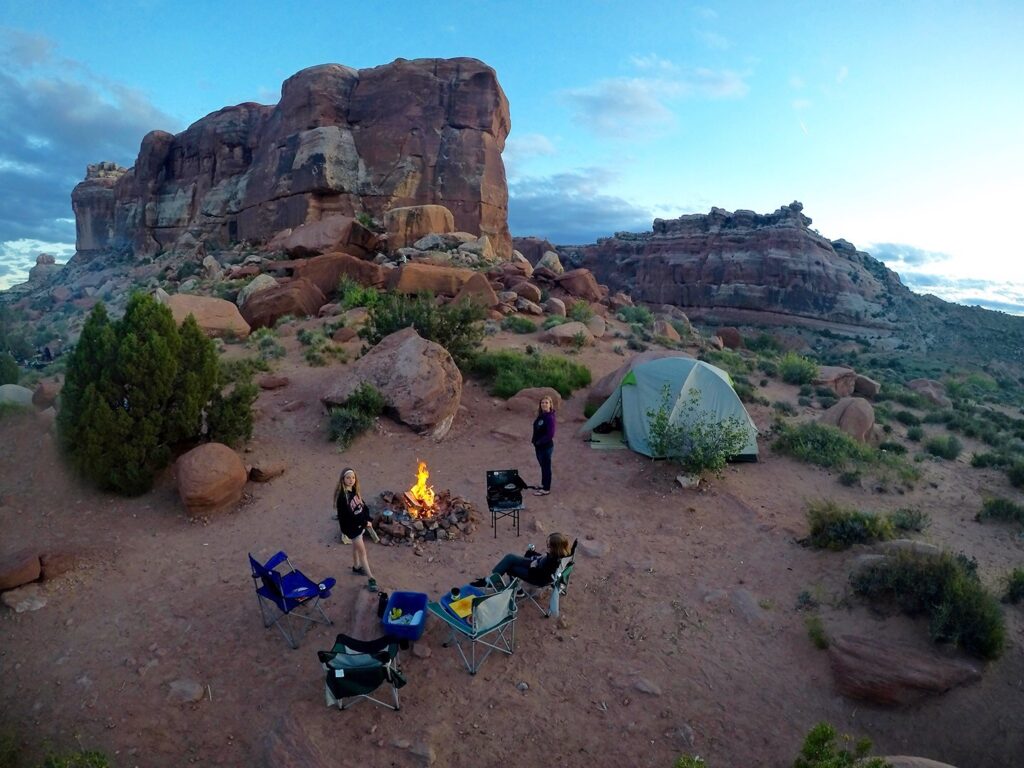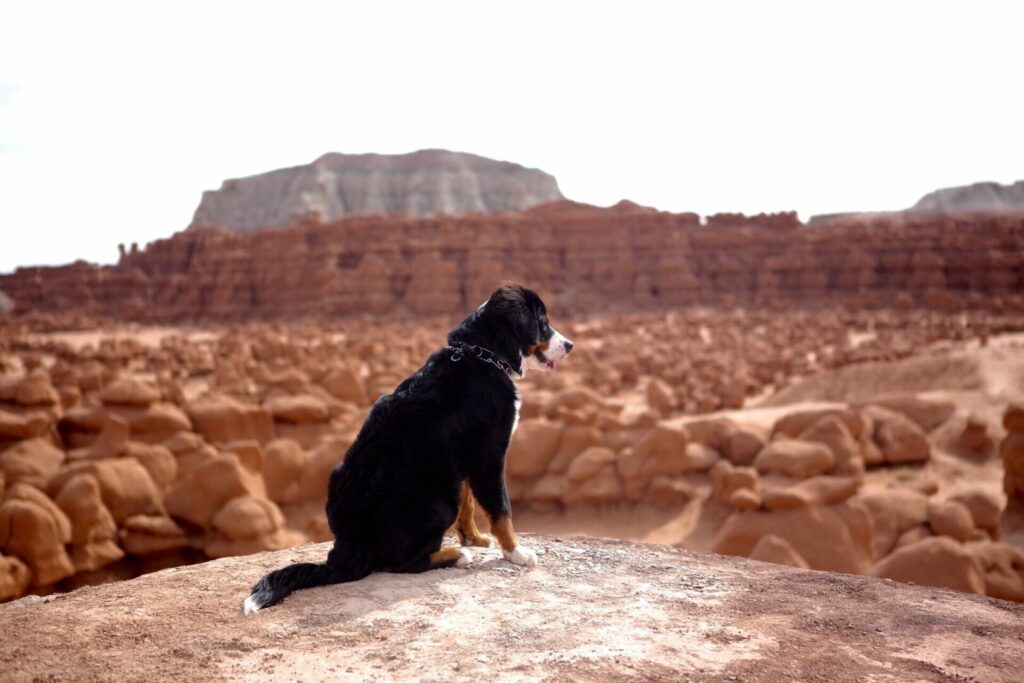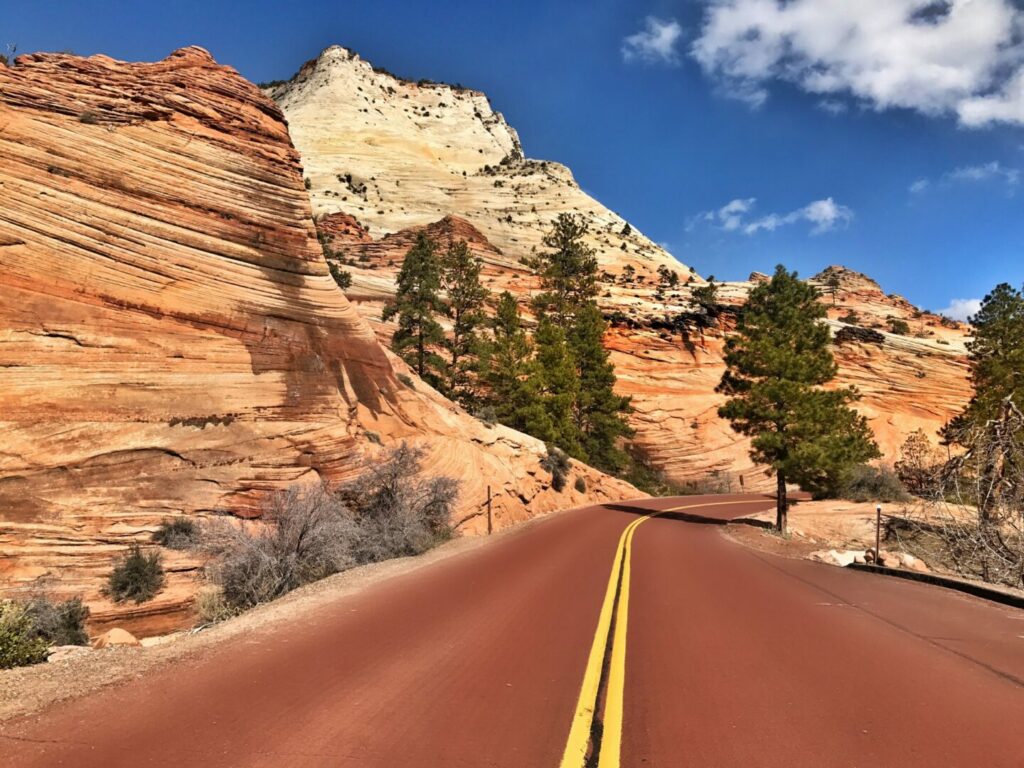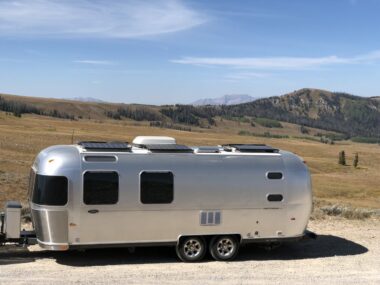Table of Contents Show
It’s no exaggeration to say that, for dispersed camping, Utah is one of the best places in America. With its millions of acres of public lands, there’s room to stretch out and find your own serene and free place to camp.
In addition, you can pursue rewarding outdoor activities like hiking, cycling, fishing, rock climbing, off-roading, and stargazing. Depending on where you set up camp, these are just a few of the things you can do right outside your door. To help you find your favorite, we’ve put together what we think of as a “best of the best” list for dispersed camping in Utah.
Are you ready to explore Utah’s wealth of free camping possibilities? Let’s go!
What Is Dispersed Camping?
By definition, dispersed camping means staying overnight outside a designated campground. Also known as boondocking, it’s the most primitive kind of RV camping. It means going off the grid for days or even weeks at a time. You have no electrical or sewer hookups and not even running water, so you’re being entirely self-sufficient. Oh, and did we mention that it’s free?
Dispersed camping areas are often very remote and sometimes just on the edge of civilization. Many are located in state or national parks or on lands owned by another federal agency. In Utah, like many western states, the federal Bureau of Land Management (BLM) manages many of the dispersed camping areas.

Is Dispersed Camping Allowed in Utah?
Not only is dispersed camping allowed in Utah, but it’s also actually one of the best places in the country for it. The BLM manages nearly 23 million acres in Utah. Though not all of it is open to campers, many places are. In fact, we had trouble narrowing down our list of dispersed camping sites. These are incredibly scenic places that are not too hard to get to and have lots of opportunities for outdoor activities.
Best Dispersed Camping Spots in Utah
Our first stop is in the Four Corners area of southeastern Utah. It’s where Utah and three other states, Colorado, Arizona, New Mexico, share a common boundary point (we’ll explore Utah’s other regions, too). These places are at high elevations, some even higher than 6,000 feet.
Valley of the Gods Dispersed Camping in Mexican Hat
Coordinates: 37.3158, -109.851
About: Some say it looks more like a mushroom, but this place gets its name from a sombrero-shaped sandstone formation. You can see it and many other amazing natural features, from almost anywhere along this 17-mile loop in southern Utah. There are two entrances, one off of U.S. Highway 261 and the other from U.S. Highway 163. The county road is very rough in places, and those approaching from the east will have to cross a shallow stream.

Lone Mesa Dispersed Camping in Moab
Coordinates: 38.6442, -109.8196
About: How’s this for a location? It’s just outside Moab and about halfway between two national parks, Arches and Canyonlands. You’ll see a sign for developed campgrounds (not free) for dispersed camping in Utah, but keep driving to an open space high on a ridge. If you’re lucky, you’ll have the place to yourself, but you may find yourself joining a small community. There are five large spaces, each with a fire pit, terrific views, and decent cell service.
Old Highway 89 Dispersed Camping in Mount Carmel
Coordinates: 37.2057, -112.675
About: This one’s just a half-hour’s drive from Zion National Park in southwestern Utah. Off the main highway (U.S. 89), there are spots just straight ahead across a portion of the old highway. If you have time, scout around for the perfect spot higher up the hill. Along with stunning views of the mountains to the east, there’s also access to the Virgin River. The nearby community of Mount Carmel has a diner, dump station, and stores for supplies.

Silver Island Mountains Dry Lake in Wendover
Coordinates: 40.8028, -114.0058
About: The downside is there’s no shade. The good news is you’re right next to the salt flats and have incredible views day and night. Some use the word otherworldly to describe the desolate beauty of this unique desert area. It’s just off the Silver Island Mountains Backcountry Byway west of Salt Lake City. They don’t allow dispersed camping directly on the salt flats, but you’re free to explore them during the day. You may run across a herd of pronghorn.
Wedge Overlook in Emery
Coordinates: 39.0932, -110.7589
About: The Wedge is a natural overlook to a massive river gorge called the Little Grand Canyon. It’s not as big as the Grand Canyon itself, of course, but it’s also not as crowded. With its 16 miles of trails, it’s also a top destination for hikers. You’ll have a ringside seat to view the changing hues of the sandstone as the sun moves across the sky. This free camping site is about 25 miles north of Interstate 70 at an elevation of 6,266 feet.

Parowan Gap Petroglyphs Dispersed Camping in Cedar City
Coordinates: 37.909474, -112.984858
About: You can brush up on your history by perusing ancient native petroglyphs and markings left by later explorers and pioneers. You can also view ancient dinosaur tracks nearby and some impressive boulders and gorgeous desert terrain. You may also encounter some sheep grazing. This area is about 13 miles north of Cedar City in southwestern Utah, just off Interstate 15. Choose from many wide-open sites along numerous dirt roads.
Wild Horse Road Dispersed Camping in Green River
Coordinates: 38.5666, -110.7483
About: If you’ve wanted to unplug from your phone, this is an excellent place for dispersed camping in Utah because there’s no cell service. It’s also a tremendous space for venturing off to explore spectacular slot canyons or sitting still for a stunning sunset. Besides the Wild Horse Canyon, the Goblin Valley is also just minutes away and certainly worth a visit. These sites are in east-central Utah near a geological feature called the San Rafael Swell.

BLM 144 Dispersed Camping in Crescent Junction
Coordinates: 38.8788, -109.8083
About: There’s plenty of room to roam here, and you’re almost at the edge of Arches National Park. It’s hard to believe it’s not always jam-packed, but that’s one of the fantastic things about boondocking. Watch out for cows and cactus thorns as you scout for your perfect spot. Hopefully, it’s one where you can catch the sunrise and sunset just by turning your head. Another plus is that this site is very convenient to I-70.
Zion Scenic Byway Dispersed Camping in Mount Carmel
Coordinates: 37.254, -112.769
About: This is another large place where you can spread out and find some privacy. It’s just 15 minutes from the east entrance of Zion National Park, so the location is excellent. The road’s a bit rough and rutty, though, with some sections of pavement missing. Depending on what kind of rig you have, you may want to scout the area in your tow vehicle. If it’s not too hot, you’ll enjoy the big rock fire pits.

Can You Camp Just Anywhere In Utah?
Dispersed camping in Utah offers lots of freedom in many ways, but that doesn’t mean you can set up camp anywhere you like. The agencies that allow free camping have a primary mission of managing the lands. So that means they have specific rules in place to ensure that different public uses don’t conflict with one another. Camping, for instance, shouldn’t damage sensitive areas or adversely affect wildlife or natural resources. That’s why they allow camping only in designated areas and have time limits in place. You can’t camp in one spot for more than 14 days in a 28-day period. You can, however, move to a different public site for the same duration.
Is Dispersed Camping in On BLM Land Safe?
Sometimes there’s a fine line between adventure and danger, so it pays to always be vigilant. The roads aren’t in the best shape in some of these areas, so play it safe. Turn around and go somewhere else if you have to. Wild animals are another concern, and so is the weather. Because of the elevation, some of these areas can get bitterly cold. They don’t get a lot of rain, but there can be sudden flooding when they do. So be sure to keep a close eye on weather reports and plan accordingly.
With the popularity of RVing these days, there’s a good chance that you’re not going to be alone at these spots. However, it’s always a good idea to let someone know where you’ll be and how long you plan to be there.
Is Dispersed Camping in Utah Worth It?
The price is always right with free campsites, but there’s no question that some spots are better than others. If you love the mountains, the desert, and exploring mind-blowing red-rock canyons, Utah is hard to top. You may have to suffer some slow-going along rough, uneven roads, but the payoffs quickly put those inconveniences in your rear mirror. In many ways, dispersed camping in Utah is a wild adventure you won’t soon forget. For many campers, it’s absolutely worth all the effort it takes to make it happen.
When will you be camping in Utah?






